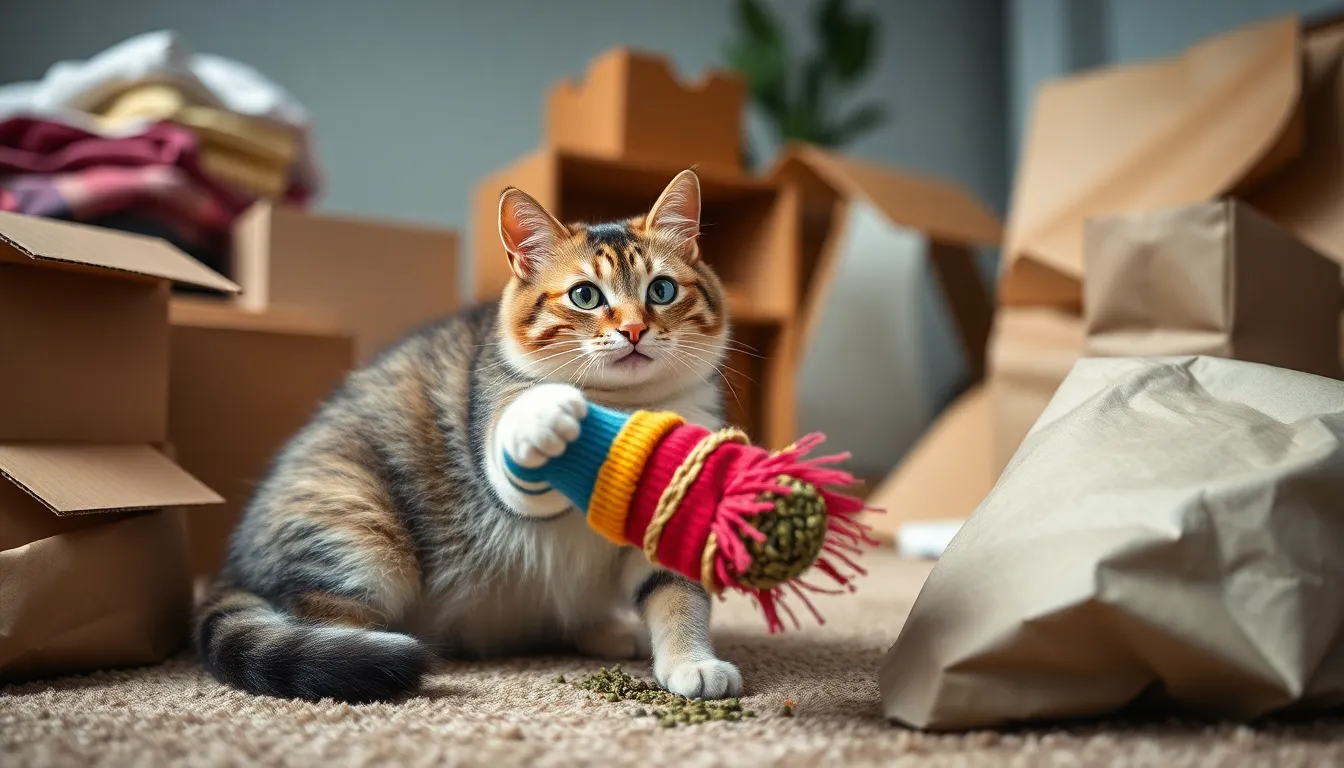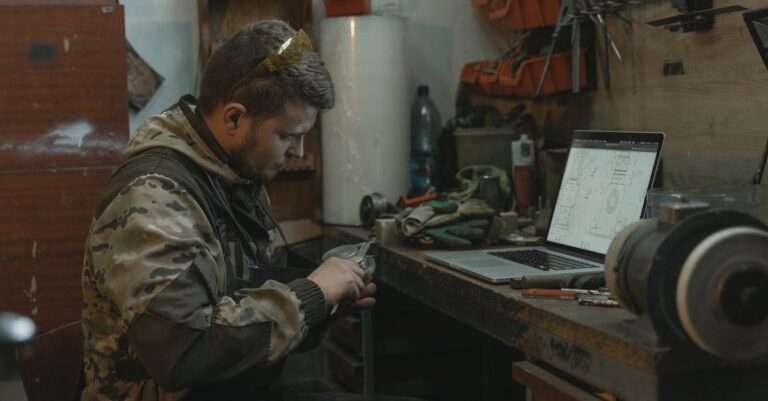Every cat deserves a toy that sparks joy and keeps them entertained, but who says it has to come from a store? With a little creativity and some household items, making a DIY cat toy can be a fun project that both the feline and the human will love. Imagine your kitty pouncing on a homemade toy, eyes wide with excitement, while you bask in the glory of your crafting genius.
Table of Contents
ToggleBenefits Of DIY Cat Toys
Creating DIY cat toys provides numerous advantages for both cats and their owners. Not only does this approach foster creativity, but it also promotes play and engagement in a cost-effective manner.
Cost-Effective Options
DIY cat toys offer a budget-friendly alternative to store-bought items. Many household items serve as excellent bases, such as old socks, cardboard boxes, or string. These materials often cost little to nothing, making toy creation accessible. Cats enjoy diverse textures and shapes, keeping them entertained without excessive spending. Owners can emphasize creativity over cost, repurposing items they already own. Making toys at home fosters a sense of accomplishment, enhancing the bond between cat and owner.
Environmental Impact
Choosing DIY cat toys helps reduce waste and minimizes environmental impact. Many commercially produced toys utilize non-biodegradable materials, contributing to landfill problems. By repurposing everyday items, he, she, or they contribute to a more sustainable lifestyle. Avoiding plastic toys decreases plastic pollution, which benefits the planet. Homemade toys often use eco-friendly materials, promoting greener choices for pet ownership. Focusing on reusing materials encourages environmental consciousness in pet care practices.
Essential Materials

Creating DIY cat toys requires a few essential materials found around the home. By using everyday items, anyone can craft engaging toys that keep cats entertained.
Common Household Items
Old socks serve as a great base for cat toys. Filling them with catnip brings added excitement. Cardboard boxes offer endless possibilities, transforming into tunnels or scratchers. String or yarn can create dangling toys cats love to swat. Additionally, paper bags provide enticing hiding spots that stimulate a cat’s curiosity. These items maximize fun while minimizing costs, showcasing creativity.
Eco-Friendly Alternatives
Recyclable materials contribute to DIY cat toys. Empty toilet paper rolls become exciting toys when filled with treats. Scrap fabric can be stitched into soft balls for cats to chase. Natural wood branches provide sturdy bases for homemade scratchers. Using materials like jute or hemp rope creates safe, durable toys without plastic. Opting for eco-friendly choices supports a sustainable approach to pet care, benefiting both pets and the environment.
Step-by-Step DIY Cat Toy Ideas
Creating DIY cat toys keeps cats entertained while promoting creativity. Below are some ideas for easy-to-make cat toys.
Simple Yarn Balls
Yarn balls captivate cats with their texture and movement. Take small pieces of yarn and wrap them into a ball shape. Ensure the ball is secure to prevent unraveling. Use different colors to stimulate your cat’s visual interest. Supervise playtime since yarn can pose a choking hazard if ingested. Store these yarn balls in a safe place when not in use.
Interactive Feather Wands
Feather wands engage cats’ hunting instincts. Gather a wooden dowel or a sturdy stick as the wand base. Attach feathers using glue or strong string at one end. Wave the wand gently to mimic prey movement and get your cat excited. Choose feathers in varied colors for visual stimulation. Store the wand out of reach when not supervised to prevent unwanted chewing.
Puzzle Feeders
Puzzle feeders challenge cats mentally and physically. Use an empty cardboard box and cut small holes in the sides. Fill the box with kibble or treats, so your cat has to figure out how to retrieve the food. This stimulation promotes problem-solving skills and keeps them busy. Consider adding toys inside for added interest. Regularly clean the feeder to maintain cleanliness and hygiene.
Safety Considerations
Ensuring safety is crucial when crafting DIY cat toys. Prioritizing non-toxic materials and avoiding small parts protect cats from potential hazards.
Non-Toxic Materials
Using non-toxic materials guarantees the safety of DIY cat toys. Items like cotton fabric and untreated wood work well for crafting. Avoid synthetic fibers and beads that might pose health risks. Always check labels for any harmful chemicals. Natural catnip offers an enticing option when filling toys. Additionally, repurposing safe household items keeps crafting fun while minimizing risks. Assessing materials carefully can lead to creative yet safe solutions for playful cats.
Avoiding Small Parts
Avoiding small parts is key to preventing choking hazards. Small items like buttons or beads can easily detach and become dangerous. Consider the size of the toy, ensuring it’s appropriate for the cat’s age and play behavior. Focusing on larger pieces allows for engaging designs that are still safe. Cats are known to chew and bite, so reinforcing toys through stitching can enhance durability. Regularly inspecting the toys for wear and tear helps maintain safety in playtime. Ensuring toys are sturdy and free from loose components promotes a secure environment for cats.
Crafting DIY cat toys is a rewarding experience that not only entertains cats but also strengthens the bond between pets and their owners. By using everyday materials and a bit of creativity, anyone can create engaging toys that keep their feline friends stimulated and happy.
This approach promotes sustainability by repurposing items that might otherwise go to waste. With safety in mind, pet owners can ensure their creations are both fun and secure. Embracing DIY cat toys is a fantastic way to provide joy for cats while supporting a more eco-friendly lifestyle.



